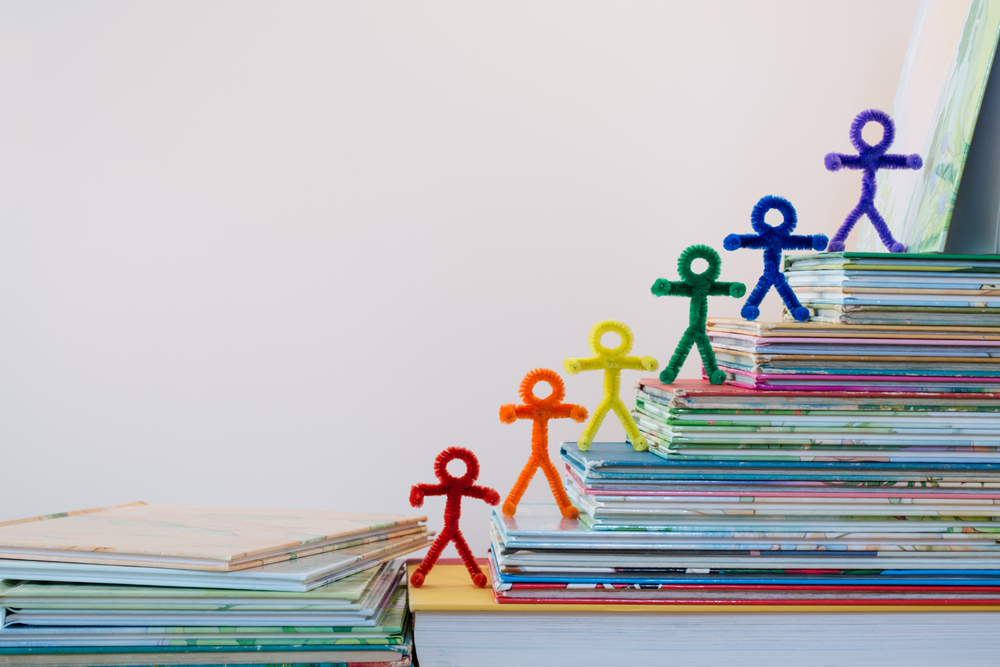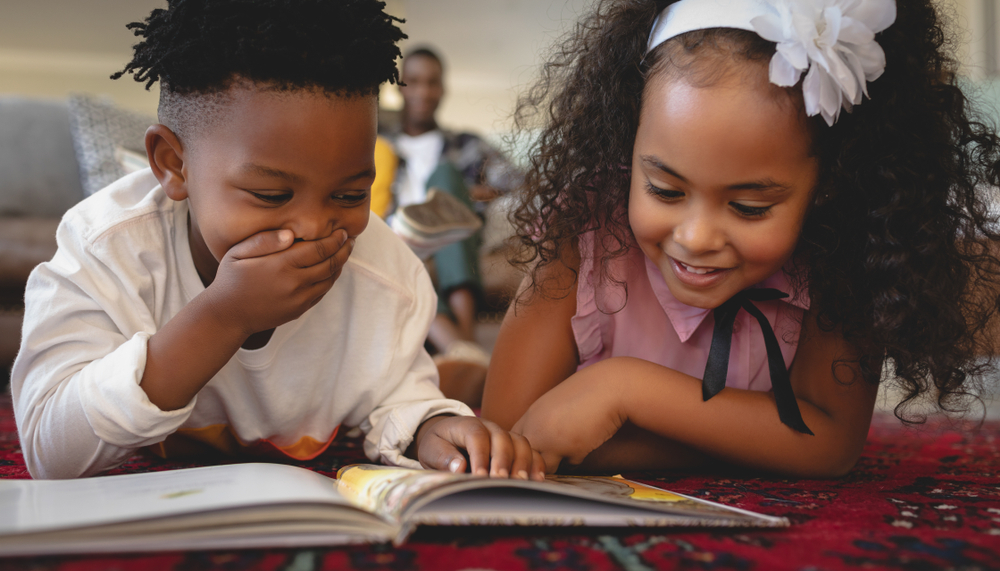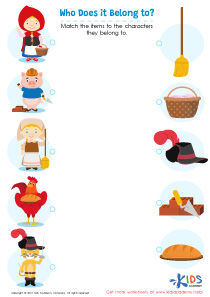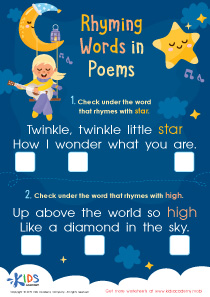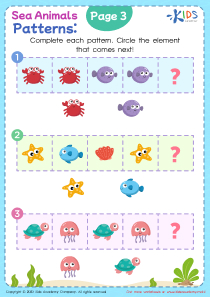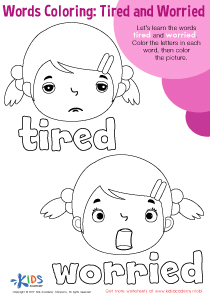Color recognition Preschool Building Vocabulary Worksheets
9 filtered results
-
From - To
Welcome to our "Color Recognition Preschool Building Vocabulary Worksheets" page! Designed for preschoolers, these engaging worksheets help young learners identify and name colors while enhancing their vocabulary. Color recognition is crucial in early childhood development, as it lays the foundation for literacy skills and cognitive growth. Our thoughtfully crafted activities encourage kids to explore a vibrant spectrum of colors through interactive exercises, including matching, coloring, and sorting tasks. Perfect for at-home learning or classroom use, these worksheets make learning fun and enjoyable. Dive into our colorful resources and watch your child’s language skills and creativity blossom today!
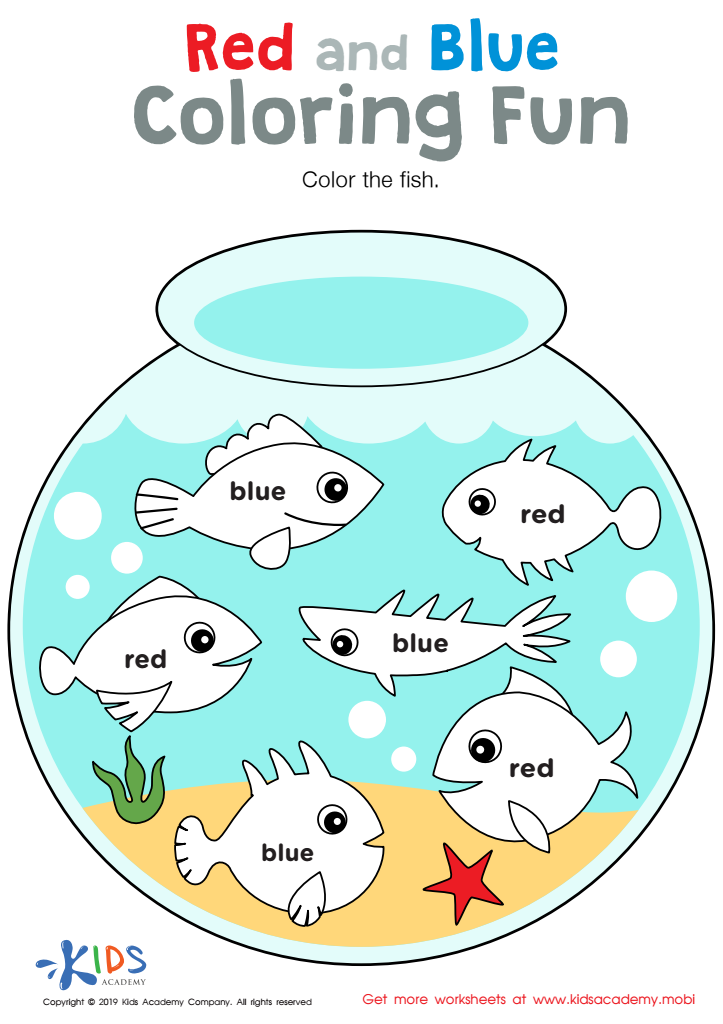

Red and Blue Coloring Fun Worksheet
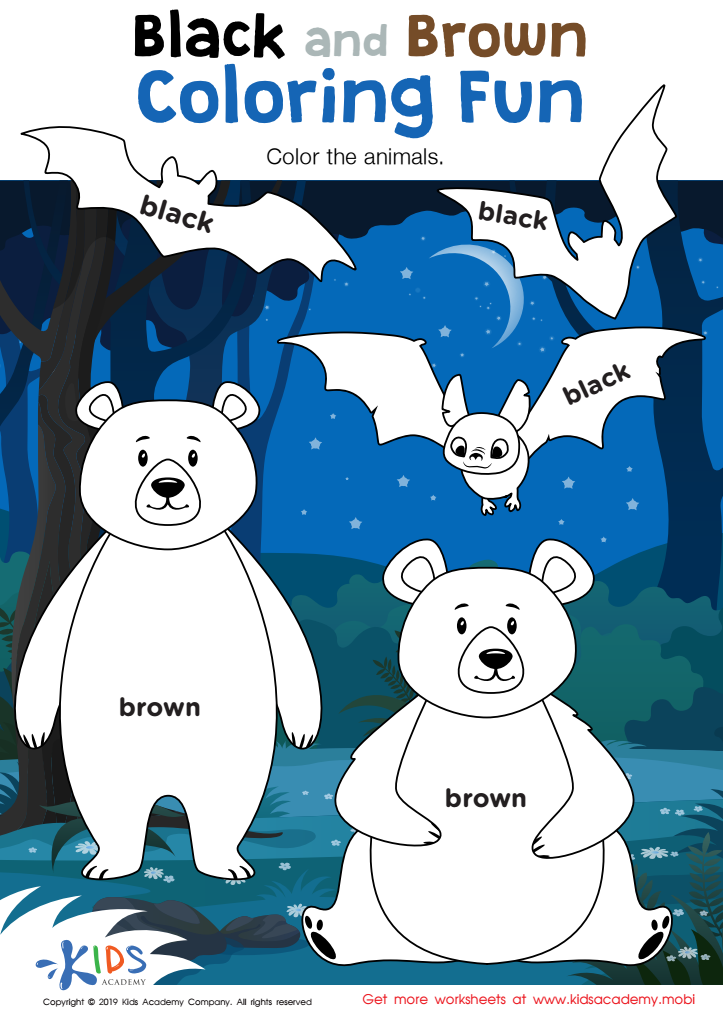

Black and Brown Coloring Fun Worksheet
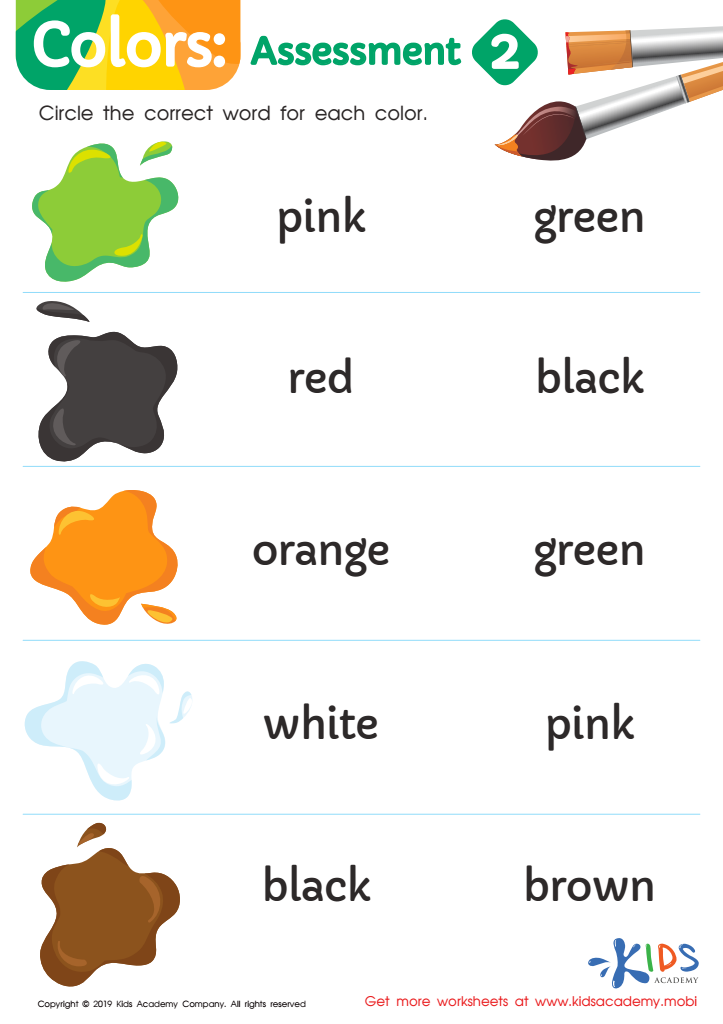

Colors: Assessment 2 Worksheet
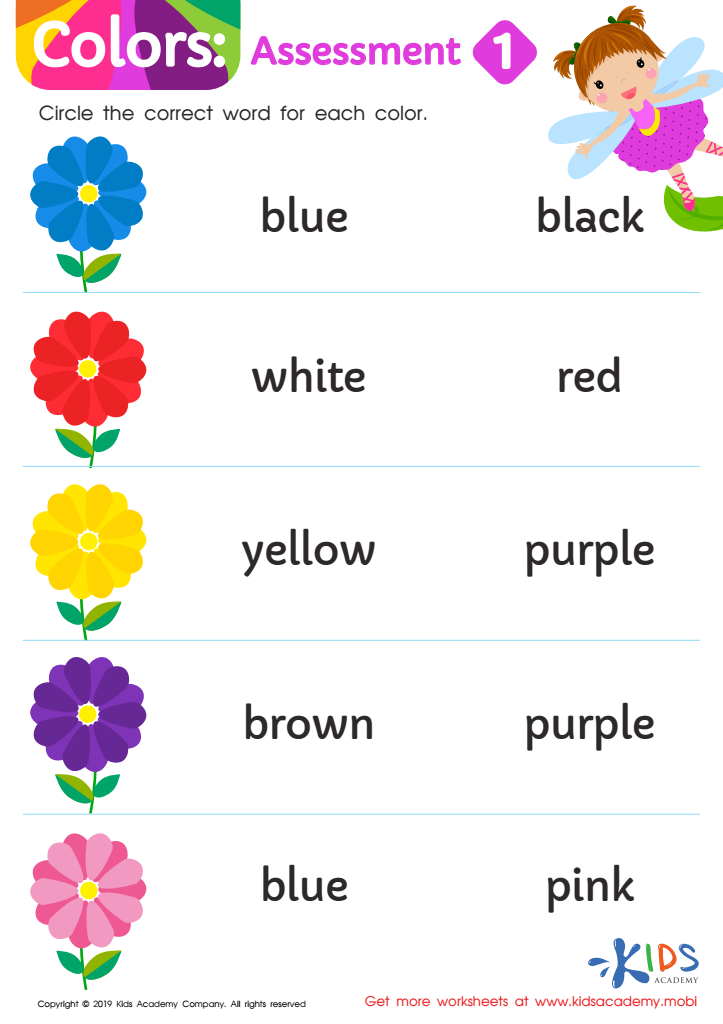

Colors: Assessment 1 Worksheet
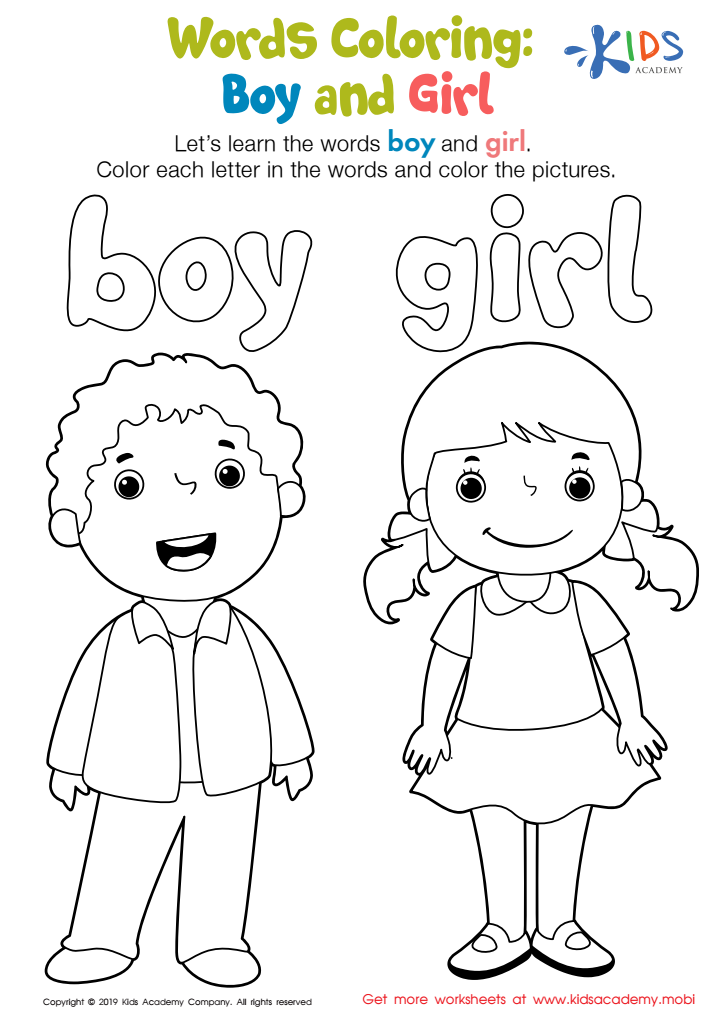

Boy and Girl Words Coloring Worksheet
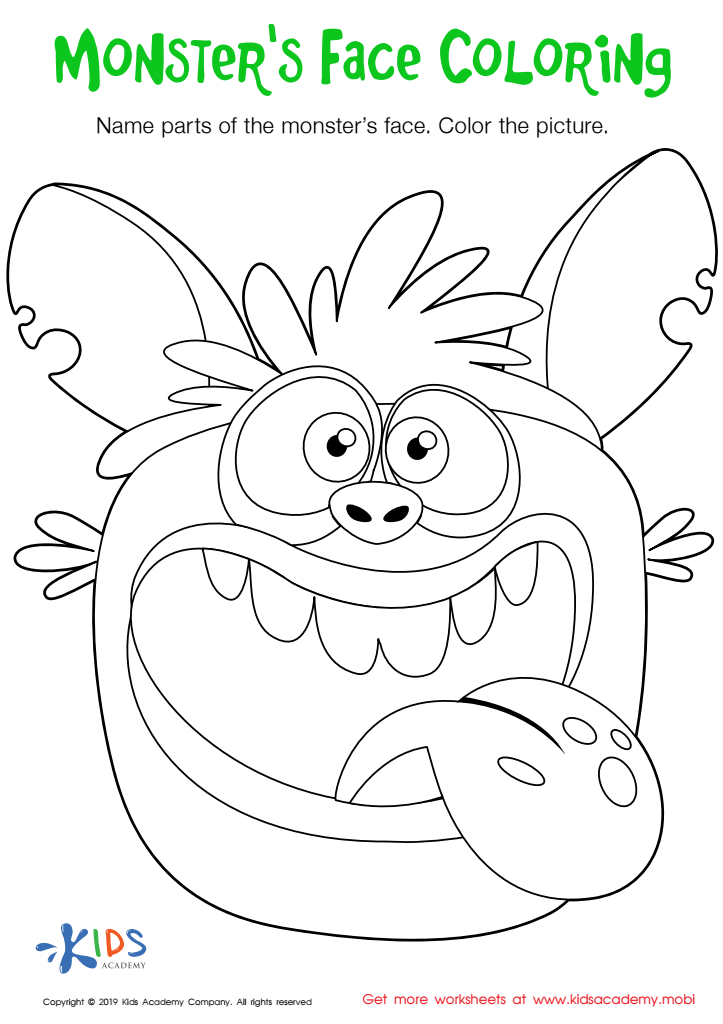

Monster's Face Coloring Worksheet
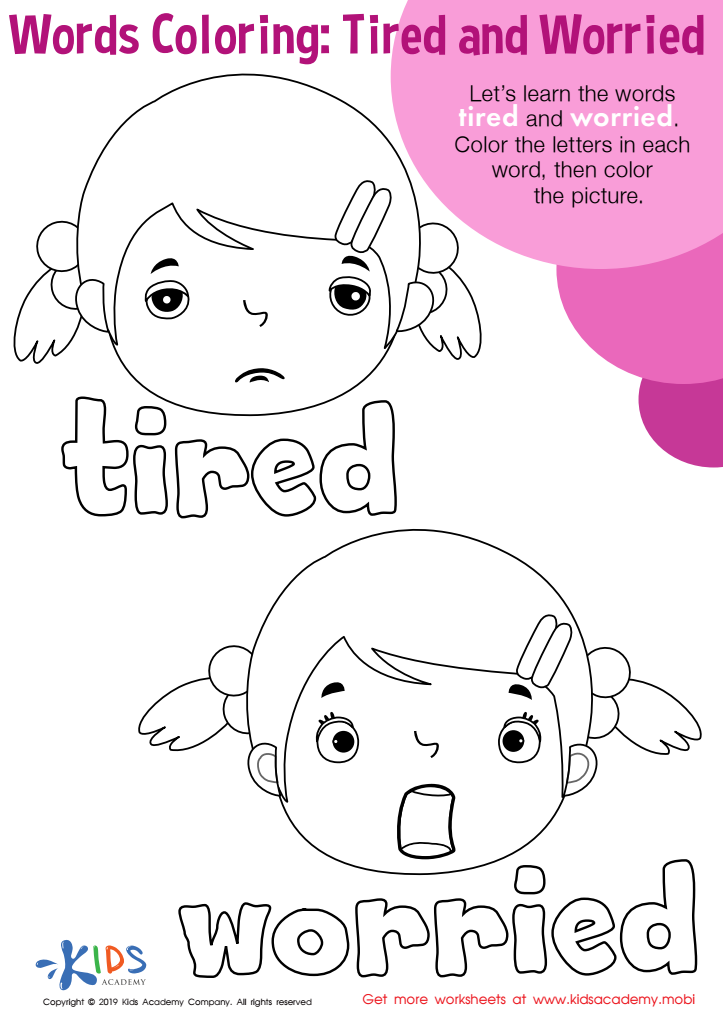

Tired and Worried Words Coloring Worksheet
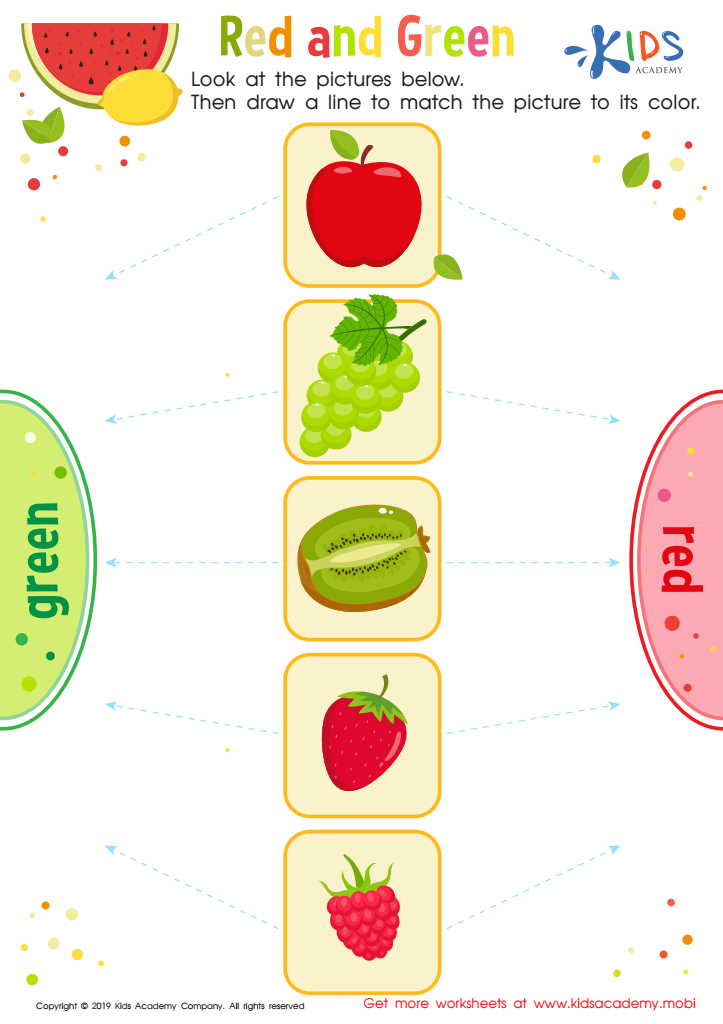

Red and Green Worksheet
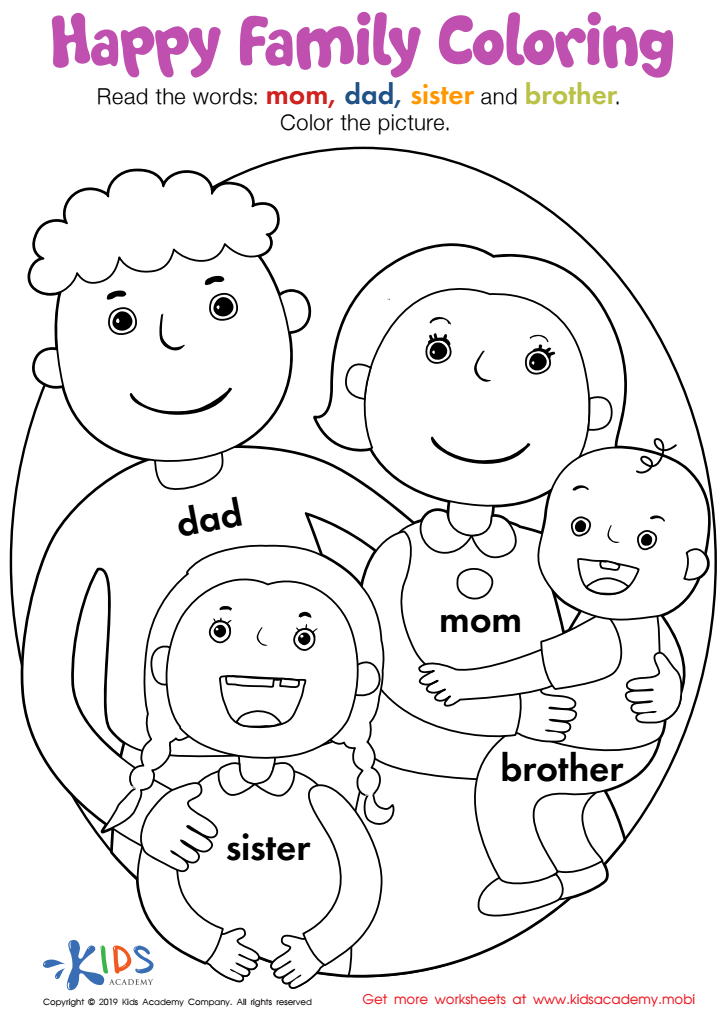

Happy Family Coloring Worksheet
Color recognition is a fundamental skill in early childhood education and serves as a building block for vocabulary development. For parents and teachers, fostering color recognition offers multiple benefits that enhance a child's learning experience.
Firstly, understanding colors helps children develop their observational skills. It encourages them to explore their environment and articulate their observations, which significantly contributes to vocabulary expansion. For example, recognizing a “red apple” not only helps identify the color but also promotes the use of descriptive language.
Secondly, color recognition plays a crucial role in a child's cognitive development. It enhances memory, categorization, and critical thinking, skills vital for future academic success. By integrating color-related activities such as sorting objects, engaging in art projects, or playing interactive games, educators and parents can create a vibrant learning atmosphere that captivates young minds.
Lastly, teaching colors links to emotional development, allowing children to express emotions through colors—black for sadness, yellow for happiness, and so forth. This fosters an understanding of feelings and promotes communication.
In summary, prioritizing color recognition not only builds vocabulary but also supports essential cognitive, observational, and emotional skills, laying a solid foundation for lifelong learning.
 Assign to My Students
Assign to My Students




